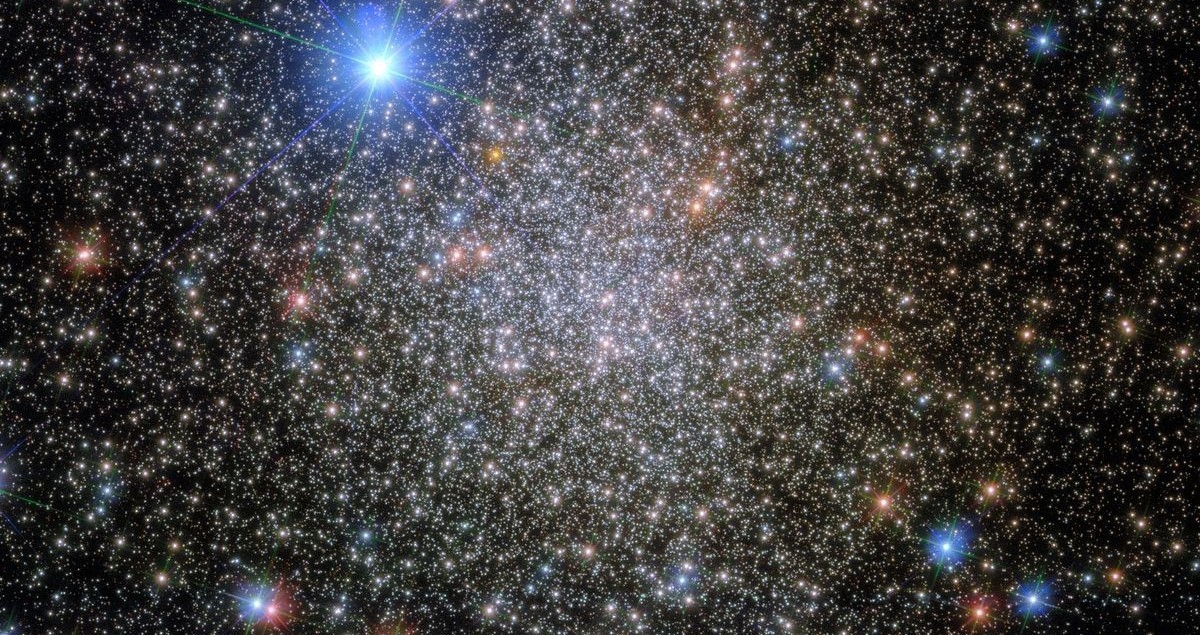
Star cluster formation is a truly remarkable phenomenon that takes place throughout the vast expanse of the universe. These celestial wonders, composed of hundreds or even thousands of stars, have captivated astronomers and stargazers alike with their breathtaking beauty and intriguing nature.
In this article, we will delve into the fascinating world of star cluster formation and explore 18 astounding facts that shed light on this cosmic process. From the different types of star clusters to the mechanisms behind their creation, we will uncover the mysteries surrounding these stellar aggregates.
Prepare to be awestruck as we embark on a journey through the cosmos, uncovering the wonders of star cluster formation.
Key Takeaways:
- Star clusters are groups of stars formed from collapsing gas and dust. They come in two types: open and globular clusters, and they help scientists study stellar evolution and galaxy formation.
- By studying star clusters, astronomers can estimate the age of galaxies, understand the Milky Way’s structure, and observe the birth and dynamics of stars. Star clusters can survive for billions of years, shaping the universe’s stellar population.
Star clusters are densely packed groups of stars.
Star clusters are formed when a large cloud of gas and dust in space collapses under its own gravity. These clusters can contain anywhere from a few hundred to millions of stars!
There are two main types of star clusters: open clusters and globular clusters.
Open clusters, also known as galactic clusters, are relatively young and contain loosely bound stars. Globular clusters, on the other hand, are much older and tightly packed, with stars orbiting the cluster’s center.
Star clusters are excellent laboratories for studying stellar evolution.
By observing the different stages of stars within a cluster, scientists can gain insights into how stars form, evolve, and eventually die.
The Pleiades, also known as the Seven Sisters, is one of the most famous open star clusters.
Located in the constellation Taurus, the Pleiades cluster is visible to the naked eye and has been mentioned in various mythologies and cultures throughout history.
Globular clusters are found mainly in the halo of galaxies.
These clusters have a spherical shape and are typically older than open clusters. They are thought to have formed during the early stages of a galaxy’s formation.
Star clusters can help determine the age of a galaxy.
By studying the ages of various clusters within a galaxy, astronomers can estimate the age of the galaxy itself. This provides valuable insights into the formation and evolution of galaxies.
Some star clusters exhibit more than one generation of stars.
In certain clusters, such as Omega Centauri, astronomers have observed multiple generations of stars. This suggests that star formation can occur in bursts within a cluster.
The formation of star clusters is influenced by the interstellar medium.
The interstellar medium, which includes gas and dust between stars, plays a crucial role in the formation and dynamics of star clusters. It provides the raw material for new star formation.
Star clusters can be used to measure the distance to other galaxies.
By studying the properties of star clusters in nearby galaxies, astronomers can calculate their distances and gain a better understanding of the vastness of the universe.
Star clusters can have different shapes.
While most star clusters are roughly spherical, some clusters have irregular or elongated shapes. This is believed to be due to gravitational interactions with other objects in their vicinity.
The Beehive Cluster is one of the closest open clusters to Earth.
Located in the constellation Cancer, the Beehive Cluster is visible to the naked eye and has been observed since ancient times.
The age of a star cluster can be estimated by studying its color-magnitude diagram.
By plotting the brightness and colors of stars in a cluster, astronomers can determine the age of the cluster based on the lifetimes of different types of stars.
Star clusters are important for understanding stellar dynamics.
By studying the movements and interactions of stars within a cluster, scientists can learn more about how gravity shapes the behavior of celestial objects.
Star clusters can be used as tracers of the Milky Way’s structure.
By analyzing the distribution of star clusters in our galaxy, astronomers can map out its spiral arms and better understand the overall structure of the Milky Way.
The youngest known star cluster in the Milky Way is only a few thousand years old.
Known as the Trapezium Cluster, it is located in the Orion Nebula and is still in the process of forming new stars.
Star cluster formation is often triggered by a nearby supernova explosion.
The shockwaves from a supernova can compress neighboring gas clouds, leading to the collapse and formation of new stars within a cluster.
Star clusters can contain variable stars.
Variable stars, which change in brightness over time, are found in some star clusters. These stars provide valuable information about stellar evolution.
Star clusters can survive for billions of years.
While individual stars within a cluster may evolve and eventually disperse, the overall cluster structure can persist for incredibly long periods, shaping the galaxy’s stellar population.
Conclusion
In conclusion, star cluster formation is a fascinating process that continues to captivate astronomers and space enthusiasts alike. Through extensive research and observation, we have gained profound insights into the mechanisms behind the birth and evolution of these remarkable cosmic structures. From the immense gravitational forces at play to the diverse range of stars and planetary systems within the clusters, the study of star cluster formation offers a window into the mysteries of the universe.
As our understanding of star cluster formation evolves, so too does our appreciation for the sheer beauty and complexity of the cosmos. These astonishing facts only scratch the surface of what we know and continue to discover. The more we explore, the more we realize that our universe is a tapestry woven with countless wonders, and star cluster formation is just one of its breathtaking chapters.
FAQs
1. What is a star cluster?
A star cluster is a group of stars that are formed from the same molecular cloud. These stars are bound together by gravity and can be categorized into two main types: open clusters, which contain hundreds of stars loosely bound together, and globular clusters, which consist of thousands to millions of stars tightly packed together.
2. How are star clusters formed?
Star clusters are formed through the gravitational collapse of a molecular cloud. As the cloud collapses under its own weight, it fragments into smaller clumps, which eventually collapse further to form individual stars. These stars remain in close proximity to each other due to the gravitational forces at play, resulting in the formation of a star cluster.
3. What factors influence star cluster formation?
The formation of star clusters is influenced by various factors, including the size and mass of the molecular cloud, the density of the surrounding interstellar medium, and the turbulent nature of the cloud. Additionally, the presence of high-mass stars within the cluster can impact its dynamical evolution.
4. How long do star clusters live?
The lifespan of a star cluster depends on its type. Open clusters tend to have shorter lifespans, ranging from a few hundred million years to a billion years, as they are more susceptible to disruptions from external forces. Globular clusters, on the other hand, can survive for billions of years due to their tightly bound nature.
5. What can we learn from studying star cluster formation?
Studying star cluster formation provides valuable insights into the early stages of stellar evolution, the formation and evolution of planetary systems, and the dynamics of stellar populations. It also helps us understand the overall structure and history of galaxies, as star clusters are often found within them.
Star clusters are truly captivating, but they're just one piece of the cosmic puzzle. Delve deeper into the mysteries of the universe by exploring the interstellar medium, where gas and dust give birth to stars. Journey through the vast expanse of galactic astronomy, unraveling the secrets of our Milky Way and beyond. And don't forget about the incredible journey of stellar evolution, where stars transform and shape the universe throughout their lifetimes. Keep exploring, and you'll find yourself in awe of the wonders that await you in the cosmos.
Was this page helpful?
Our commitment to delivering trustworthy and engaging content is at the heart of what we do. Each fact on our site is contributed by real users like you, bringing a wealth of diverse insights and information. To ensure the highest standards of accuracy and reliability, our dedicated editors meticulously review each submission. This process guarantees that the facts we share are not only fascinating but also credible. Trust in our commitment to quality and authenticity as you explore and learn with us.


